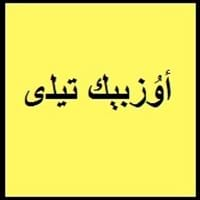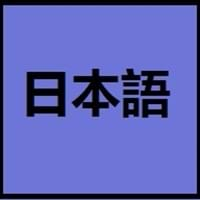Uzbek vs Japanese
Countries
Turkey, Uzbekistan
Japan
National Language
Afganistan, China, Kazakhstan, Kyrgyzstan, Russia, Tajikistan, Turkmenistan, Uzbekistan
Japan
Second Language
Not spoken in any of the countries
Not spoken in any of the countries
Speaking Continents
Middle East
Asia, Pacific
Minority Language
Not spoken in any of the countries
Palau
Regulated By
Not Available
Agency for Cultural Affairs (文化庁) at the Ministry of Education
Interesting Facts
- Uzbek is officially written in the Latin script, but many people still use Cyrillic script.
- In Uzbek language, there are many loanwords from Russian, Arabic and Persian.
- In Japanese Language, there are 4 different ways to address people: kun, chan, san and sama.
- There are many words in Japanese language which end with vowel letter, which determines the structure and rhythm of Japanese.
Similar To
Kazakh and Uyghur Languages
Korean Language
Derived From
Not Available
Not Available
Alphabets in
Uzbek-Alphabets.jpg#200
Japanese-Alphabets.jpg#200
Scripts
Arabic, Cyrillic, Latin
Kana
Writing Direction
Not Available
Left-To-Right, Horizontal, Top-To-Bottom
Hello
Salom
こんにちは (Kon'nichiwa)
Thank You
Rakhmat
ありがとう (Arigatō)
How Are You?
Qalay siz?
お元気ですか (O genki desu ka?)
Good Night
Hayirli tun
おやすみなさい (Oyasuminasai)
Good Evening
Hayirli kech
こんばんは (Konbanwa)
Good Afternoon
Hayirli kun
こんにちは (Konnichiwa!)
Good Morning
Hayirli tong
おはよう (Ohayō)
Please
Iltimos
お願いします (Onegaishimasu)
Sorry
Kechiring!
ごめんなさい (Gomen'nasai)
Bye
Xayr
さようなら (Sayōnara)
I Love You
Sizni sevaman
愛しています (Aishiteimasu)
Excuse Me
Iltimos! Menga qarang
すみません (Sumimasen)
Dialect 1
Tashkent
Sanuki
Where They Speak
Not Available
Kagawa
How Many People Speak
Not Available
Where They Speak
Not Available
Fukuoka
Dialect 3
Ferghana
Kansai
Where They Speak
Not Available
kansai
Native Name
أۇزبېك ﺗﻴﻠی o'zbek tili ўзбек тили (o‘zbek tili)
日本語
Alternative Names
Annamese, Ching, Gin, Jing, Kinh, Viet
Not Available
French Name
ouszbek
japonais
German Name
Usbekisch
Japanisch
Pronunciation
Not Available
/nihoɴɡo/: [nihõŋɡo], [nihõŋŋo]
Ethnicity
Uzbek
Japanese (Yamato)
Origin
9th–12th centuries AD
1185
Language Family
Turkic Family
Japonic Family
Subgroup
Turkic
Not Available
Branch
Southestern(Chagatai)
Not Available
Early Forms
Chagatay
Old Japanese, Early Middle Japanese, Late Middle Japanese and Early Modern Japanese
Standard Forms
Uzbek
Japanese
Signed Forms
Not Available
Signed Japanese
Scope
Macrolanguage
Individual
ISO 639 6
Not Available
Not Available
Glottocode
uzbe1247
nucl1643
Linguasphere
No data available
45-CAA-a
Language Type
Living
Living
Language Linguistic Typology
Not Available
Subject-Object-Verb
Language Morphological Typology
Not Available
Agglutinative, Synthetic
Uzbek and Japanese Language History
Comparison of Uzbek vs Japanese language history gives us differences between origin of Uzbek and Japanese language. History of Uzbek language states that this language originated in 9th–12th centuries AD whereas history of Japanese language states that this language originated in 1185. Family of the language also forms a part of history of that language. More on language families of these languages can be found out on Uzbek and Japanese Language History.
Uzbek and Japanese Greetings
People around the world use different languages to interact with each other. Even if we cannot communicate fluently in any language, it will always be beneficial to know about some of the common greetings or phrases from that language. This is where Uzbek and Japanese greetings helps you to understand basic phrases in Uzbek and Japanese language. Uzbek word for "Hello" is Salom or Japanese word for "Thank You" is ありがとう (Arigatō). Find more of such common Uzbek Greetings and Japanese Greetings. These greetings will help you to be more confident when conversing with natives that speak these languages.
Uzbek vs Japanese Difficulty
The Uzbek vs Japanese difficulty level basically depends on the number of Uzbek Alphabets and Japanese Alphabets. Also the number of vowels and consonants in the language plays an important role in deciding the difficulty level of that language. The important points to be considered when we compare Uzbek and Japanese are the origin, speaking countries, language family, different greetings, speaking population of these languages. Want to know in Uzbek and Japanese, which language is harder to learn? Time required to learn Uzbek is 44 weeks while to learn Japanese time required is 88 weeks.





